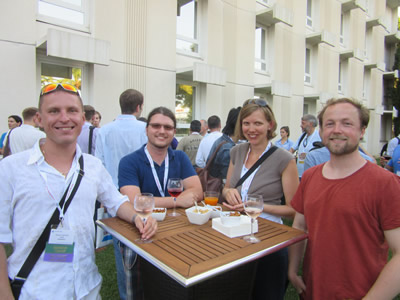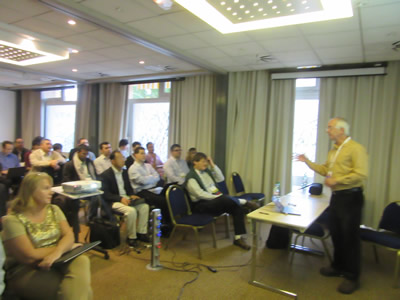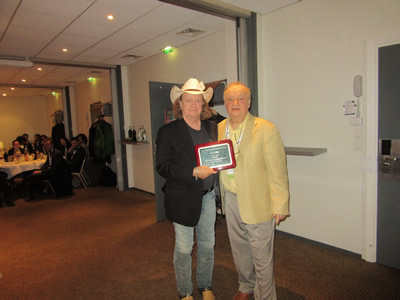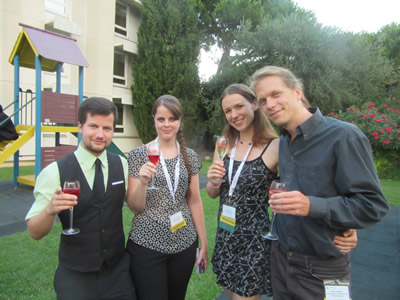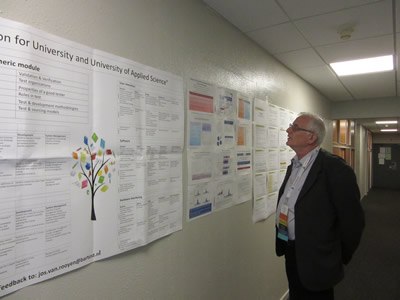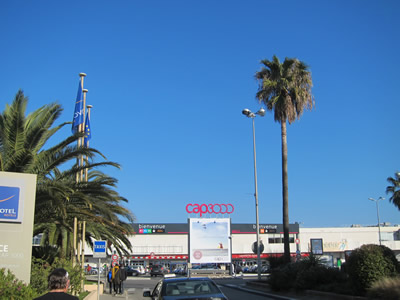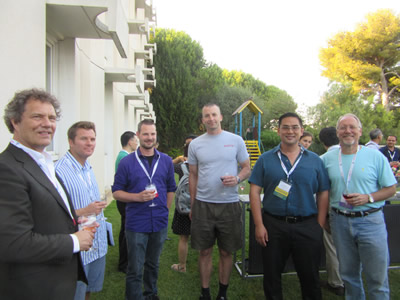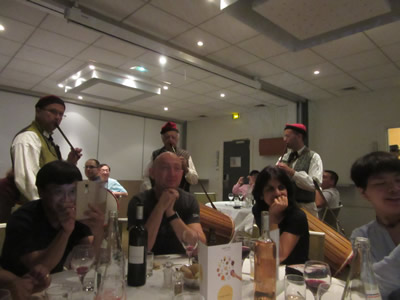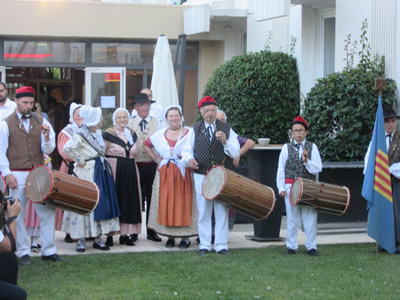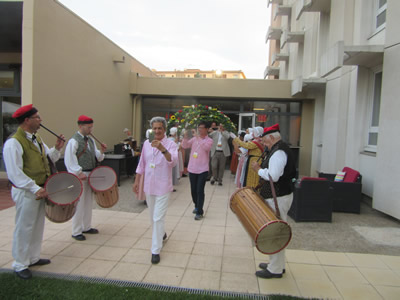SPACOMM 2025 - The Seventeenth International Conference on Advances in Satellite and Space Communications
May 18, 2025 - May 22, 2025
SPACOMM 2025: Call for Papers
Onsite and Online Options: In order to accommodate various situations, we are offering the option for either physical presence or virtual participation (pdf slides or pre-recorded videos).
Significant efforts have been allotted to design and deploy global navigation satellite communications systems, Satellite navigation technologies, applications, and services experience still challenges related to signal processing, security, performance, and accuracy. Theories and practices on system-in-package RF design techniques, filters, passive circuits, microwaves, frequency handling, radars, antennas, and radio communications and radio waves propagation have been implemented. Services based on their use are now available, especially those for global positioning and navigation. For example, it is critical to identify the location of targets or the direction of arrival of any signal for civilians or on-purpose applications; smarts antennas and advanced active filters are playing a crucial role. Also progress has been made for transmission strategies; multiantenna systems can be used to increase the transmission speed without need for more bandwidth or power. Special techniques and strategies have been developed and implemented in electronic warfare target location systems.
The SPACOMM series of events constitutes an attempt to evaluate the state of the art on academia and industry on the satellite, radar, and antennas based communications bringing together scientists and practitioners with challenging issues, achievements, and lessons learnt.
We solicit both academic, research, and industrial contributions. We welcome technical papers presenting research and practical results, position papers addressing the pros and cons of specific proposals, such as those being discussed in the standard fora or in industry consortia, survey papers addressing the key problems and solutions on any of the above topics short papers on work in progress, and panel proposals.
Industrial presentations are not subject to the format and content constraints of regular submissions. We expect short and long presentations that express industrial position and status.
Tutorials on specific related topics and panels on challenging areas are encouraged.
The topics suggested by the conference can be discussed in term of concepts, state of the art, research, standards, implementations, running experiments, applications, and industrial case studies. Authors are invited to submit complete unpublished papers, which are not under review in any other conference or journal in the following, but not limited to, topic areas.
All topics and submission formats are open to both research and industry contributions.
SPACOMM 2025 conference tracks:
Signal processing in telecommunications
Signal processing theory and practice;
Advances in modulation and coding;
Image and multidimensional signal processing;
Signal filter design and structures;
Multirate filtering, filter banks, and adaptive filters;
Fast signal processing algorithms;
Nonlinear signals and systems;
Nonuniform transformation;
2D nonuniform DFT;
Fast algorithm of NDFT;
Advanced image/video coding;
Advanced prediction techniques;
Signal detection and reconstruction;
Spectral estimation and time-frequency analysis;
Higher order spectrum analysis;
Parameter estimation;
Array signal processing;
Statistical signal analysis;
Signal and system modeling;
Cyclostationary signal analysis;
Active noise control, active noise reduction and echo cancellation;
Psychoacoustics and room acoustics;
Signal processing for music;
Binaural systems and multidimensional signal systems;
Geophysical and seismic signal processing;
Nonlinear interpolation/resampling;
Extensions to wavelet based coding (x-lets);
Low complexity image/video compression;
Multiple resolution signal processing;
New approach to digital signal processing;
Compression of random data;
Recompression of compressed data;
2D projection of 3D data;
Stereo data matching;
Emerging applications requiring new compression tools;
Unified compression and recognition;
H.264 and latest video coding standards;
Latest audio coding standards
Remote sensing
Remote sensing technology and geographic information system (GIS); Remote sensing computation applications; Optical communication for remote sensing; High performance computing for remote sensing; Lidar technology in remote sensing; Satellites and remote sensing; Geolocation of radio frequency signals; Synthetic aperture radar (SAR) image process modeling; Quality of remote data (spatial, spectral, radiometric and temporal resolutions); Remote sensing tools and software; Sensor calibration; Applications of remote sensing; Remote sensing for solar energy forecasting; Turbulence modeling and simulation; Climate prediction models
Global coverage via 6G/7G: integrating 5G and IoT with satellite networks
High data rates; Ultra fast access of Internet; Full home automation and home applications; Smart homes and cities; Global energy sources; Space and defense 6G-oriented technologies; Integrated satellite-to-satellite communications; Monitoring/driving natural calamities; Sea-to-Space communications; Nano antennas; Fly sensors; Point-to-point wireless communication networks; Super-fast broadband signals; High speed optical broadcasting fibers lines; Space roaming; Earth observation (backhaul link); Space observation (backhaul link); Small cell (cover zones without Internet); Space-IoT (monitoring sensors); Standard adaptation to 6G for handoff and roaming challenges (Global Position System (GPS), Galileo, COMPASS, GLONASS)
Antenna/Radar signal processing
Signal detection and estimation;
RF engineering;
Active filters;
Analog and digital filters;
Oscillator circuit design;
Circuit design for high-speed frequency synthesis;
Statistical and adaptive signal processing;
Computational electrodynamics;
Signal processing for sensing systems;
RFID and MMIC design principles and applications;
Microstrip circuit design and applications;
Design and analysis of microwave radiometer systems;
Modem microwave;
System-in-package RF design and applications
Satellite and space communications
Earth-space communications; MIMO satellite communications; Hybrid satellite and terrestrial networks; Access Schemes; Demand Assignment Multiple Access (DAMA); Cross-layer air interface design; Channel models; Navigation services; Reliable multicast protocols; Transport protocol performance over satellite; IP over satellite Routing protocols; Game theory applications in satellite networks; Onboard switching and processing technologies; QoS and performance; Call admission control schemes; Dynamic bandwidth allocation; Adjacent and terrestrial interference; Fade mitigation techniques; Advanced channel modeling; Security, privacy, and trust; Radio resource management; IT application in Space Communications; Standards activities
Delay Tolerant Networking
Use of DTN protocols in space missions;
DTN for PI/instrument connectivity;
Routing for DTNs;
Performance and reliability of DTN protocols
Satellites and nano-satellites
Satellite communications (hybrid satellites and terrestrial networks);
Special protocols for nano-satellites;
Onboard processing technology;
Interplanetary communications (spatial mission analysis, in-flight experiences, delay tolerant networking [DTN]);
Nano satellites and nano-rockets;
Fundamental of nano-satellites communications;
New technologies specific for small satellites;
Applications (earth observation, science, telecommunications, navigation);
New technologies; Satellite constellation design
Geographic Information and applications
Geographic information systems; Earth observation; Global positioning systems; Digital terrain modeling; Principles of GNSS, inertial and multi-sensor integrated navigation systems; GNSS applications; Spectrum systems for GNSS; GNSS devices for weak signals; Wireless positioning technologies and applications; Modern tracking systems; Satellite navigation (GPS, Galileo, augmentation systems); Visibility analysis of a satellite, or satellite constellation
Satellite/space communications-based applications
Satellite-based disaster recovery;
Satellite-based large-scale sensor-networks;
Satellite-based power grids monitoring and control;
Satellite-based remote eHealth;
Satellite based alarm systems;
Satellite-based sensing and data mining;
Satellite-based weather forecast;
Satellite-based earthquake surveillance;
Satellite-based environmental surveillance
Radar systems
Radar systems analysis and modeling;
Radar and signal processing;
Short range FM radar;
Millimeter-wave radar targets;
Radar reflectivity (land and sea);
Radar system performance modeling;
Interception and analysis of radar signal
Antennas
Antenna design and communications;
Adaptive antenna and phased arrays for radar and communications;
Smart antennas;
Radioware propagation and antennas for personal communications;
Dielectric resonator antennas;
Multiantenna wireless communications systems;
Antennas and propagation for body-centric wireless communications;
Ultrawideband antennas;
Mobile antennas systems;
Parasitic antennas for cellular communications
Radio
Radio resource management and dynamic spectrum sharing;
Platforms and architectures for cognitive radio;
Access schemes;
Wireless network co-existence;
Ultra-Wideband cognitive radio system;
Interference metric modeling;
Beamforming and MIMO for interference avoidance;
Anti-jamming channel coding;
QoS provisioning and MAC protocols;
Self-organizing mesh networks and autonomic communications;
Multi-resolution channel sensing algorithms
Warfare
Electronic warfare target location systems;
Statistical multisource-multitarget information fusion;
Multisensor data fusion;
Multimodel surveillance;
Military applications
Galaxy-scale satellite communications and exploration missions
Planetary exploration management;
Space astronomy advances;
Solar-terrestrial sciences;
Space life sciences and mission monitoring;
Space physical sciences and satellite communications; Operational space medicine;
Human exploitation of space resources
Deadlines:
Submission | Feb 21, 2025 |
Notification | Mar 24, 2025 |
Registration | Apr 05, 2025 |
Camera ready | Apr 13, 2025 |
Deadlines differ for special tracks. Please consult the conference home page for special tracks Call for Papers (if any).
INSTRUCTION FOR THE AUTHORS
Authors of selected papers will be invited to submit extended versions to one of the IARIA Journals.
Publisher: XPS (Xpert Publishing Services)
Archived: ThinkMindTM Digital Library (free access)
Prints available at Curran Associates, Inc.
How to submit to appropriate indexes.
Only .pdf or .doc files will be accepted for paper submission. All received submissions will be acknowledged via an automated system.
Contribution types
- regular papers [in the proceedings, digital library]
- short papers (work in progress) [in the proceedings, digital library]
- ideas: two pages [in the proceedings, digital library]
- extended abstracts: two pages [in the proceedings, digital library]
- posters: two pages [in the proceedings, digital library]
- posters: slide only [slide-deck posted on www.iaria.org]
- presentations: slide only [slide-deck posted on www.iaria.org]
- demos: two pages [posted on www.iaria.org]
FORMATS
Only .pdf or .doc files will be accepted for paper submission. All received submissions will be acknowledged via an automated system.
Final author manuscripts will be 8.5" x 11", not exceeding 6 pages; max 4 extra pages allowed at additional cost.
Helpful information for paper formatting for MS Word can be found here.
There is a community provided LaTeX template: the CTAN package iaria (with full IARIA formatting rules, including IARIA citation style, but for providing citation style it is tightly bound to pdflatex+biblatex+biber). In addition, there is also iaria-lite (not bound to pdflatex+biblatex+biber, but compatible with any TeX stack; thus, it cannot provide the IARIA citation formattings, but only the titlepage and content-related IARIA formatting rules). Based on the iaria package, there is a minimal working example as Overleaf template. When you are using the LaTeX templates, please still adhere to the additional editorial rules.
Slides-based contributions can use the corporate/university format and style.
Your paper should also comply with the additional editorial rules.
Once you receive the notification of contribution acceptance, you will be provided by the publisher an online author kit with all the steps an author needs to follow to submit the final version. The author kits URL will be included in the letter of acceptance.
We would recommend that you should not use too many extra pages, even if you can afford the extra fees. No more than 2 contributions per event are recommended, as each contribution must be separately registered and paid for. At least one author of each accepted paper must register to ensure that the paper will be included in the conference proceedings and in the digital library, or posted on the www.iaria.org (for slide-based contributions).
CONTRIBUTION TYPE
Regular Papers (up to 6-10 page article -6 pages covered the by regular registration; max 4 extra pages allowed at additional cost- ) (oral presentation)
These contributions could be academic or industrial research, survey, white, implementation-oriented, architecture-oriented, white papers, etc. They will be included in the proceedings, posted in the free-access ThinkMind digital library and sent for indexing. Please submit the contributions following the instructions for the regular submissions using the "Submit a Paper" button and selecting the appropriate contribution type. 12-14 presentation slides are suggested.
Short papers (work in progress) (up to 4 pages long) (oral presentation)
Work-in-progress contributions are welcome. These contributions represent partial achievements of longer-term projects. They could be academic or industrial research, survey, white, implementation-oriented, architecture-oriented, white papers, etc. Please submit the contributions following the instructions for the regular submissions using the "Submit a Paper" button and selecting the contribution type as work in progress. Contributors must follow the conference deadlines, describing early research and novel skeleton ideas in the areas of the conference topics. The work will be published in the conference proceedings, posted in the free-access ThinkMind digital library and sent for indexing. For more details, see the Work in Progress explanation page. 12-14 presentation slides are suggested.
Ideas contributions (2 pages long) (oral presentation)
This category is dedicated to new ideas in their very early stage. Idea contributions are expression of yet to be developed approaches, with pros/cons, not yet consolidated. Ideas contributions are intended for a debate and audience feedback. Please submit the contributions following the instructions for the regular submissions using the "Submit a Paper" button and selecting the contribution type as Idea. Contributors must follow the conference deadlines, describing early research and novel skeleton ideas in the areas of the conference topics. The work will be published in the conference proceedings, posted in the free-access ThinkMind digital library and sent for indexing. For more details, see the Ideas explanation page. 12-14 presentation slides are suggested.
Extended abstracts (2 pages long) (oral presentation)
Extended abstracts summarize a long potential publication with noticeable results. It is intended for sharing yet to be written, or further on intended for a journal publication. Please submit the contributions following the instructions for the regular submissions using the "Submit a Paper" button and selecting the contribution type as Extended abstract. Contributors must follow the conference deadlines, describing early research and novel skeleton ideas in the areas of the conference topics. The work will be published in the conference proceedings, posted in the free-access ThinkMind digital library and sent for indexing. 12-14 presentation slides are suggested.
Posters (paper-based, two pages long) (oral presentation)
Posters are intended for ongoing research projects, concrete realizations, or industrial applications/projects presentations. The poster may be presented during sessions reserved for posters, or mixed with presentation of articles of similar topic. A two-page paper summarizes a presentation intended to be a POSTER. This allows an author to summarize a series of results and expose them via a big number of figures, graphics and tables. Please submit the contributions following the instructions for the regular submissions using the "Submit a Paper" button and selecting the contribution type as Poster Two Pages. Contributors must follow the conference deadlines, describing early research and novel skeleton ideas in the areas of the conference topics. The work will be published in the conference proceedings, posted in the free-access ThinkMind digital library and sent for indexing. 8-10 presentation slides are suggested. Also a big Poster is suitable, used for live discussions with the attendees, in addition to the oral presentation.
Posters (slide-based, only) (oral presentation)
Posters are intended for ongoing research projects, concrete realizations, or industrial applications/projects presentations. The poster may be presented during sessions reserved for posters, or mixed with presentation of articles of similar topic. The slides must have comprehensive comments. This type of contribution only requires a 8-10 slide-deck. Please submit the contributions following the instructions for the regular submissions using the "Submit a Paper" button and selecting the contribution type as Poster (slide-only). The slide-deck will be posted, post-event, on www.iaria.org.
8-10 presentation slides are suggested. Also a big Poster is suitable, used for live discussions with the attendees, additionally to the oral presentation.
Presentations (slide-based, only) (oral presentation)
These contributions represent technical marketing/industrial/business/positioning presentations. This type of contribution only requires a 12-14 slide-deck. Please submit the contributions following the submission instructions by using the "Submit a Paper" button and selecting the contribution type as Presentation (slide-only). The slide-deck will be posted, post-event, on www.iaria.org.
12-14 presentation slides are suggested.
Demos (two pages) [posted on www.iaria.org]
Demos represent special contributions where a tool, an implementation of an application, or a freshly implemented system is presented in its alfa/beta version. It might also be intended for thsoe new application to gather the attendee opinion. A two-page summary for a demo is intended to be. It would be scheduled in special time spots, to ensure a maximum attendance from the participants. Please submit the contributions following the submission instructions by using the "Submit a Paper" button and selecting the contribution type as Demos. The Demos paper will be posted, post-event, on www.iaria.org.
Tutorial proposals
Tutorials provide overviews of current high interest topics. Proposals should be for 2-3 hour long. Proposals must contain the title, the summary of the content, and the biography of the presenter(s). The tutorial slide decks will be posted on the IARIA site.
Please send your proposals to tutorial proposal
Panel proposals
The organizers encourage scientists and industry leaders to organize dedicated panels dealing with controversial and challenging topics and paradigms. Panel moderators are asked to identify their guests and manage that their appropriate talk supports timely reach our deadlines. Moderators must specifically submit an official proposal, indicating their background, panelist names, their affiliation, the topic of the panel, as well as short biographies. The panel slide deck will be posted on the IARIA site.
Please send your proposals to panel proposal

